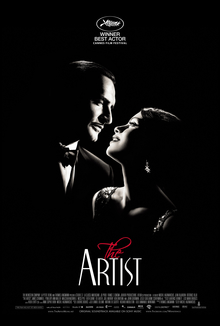A blog formerly known as Bookishness / By Charles Matthews
"Dazzled by so many and such marvelous inventions, the people of Macondo ... became indignant over the living images that the prosperous merchant Bruno Crespi projected in the theater with the lion-head ticket windows, for a character who had died and was buried in one film and for whose misfortune tears had been shed would reappear alive and transformed into an Arab in the next one. The audience, who had paid two cents apiece to share the difficulties of the actors, would not tolerate that outlandish fraud and they broke up the seats. The mayor, at the urging of Bruno Crespi, explained in a proclamation that the cinema was a machine of illusions that did not merit the emotional outbursts of the audience. With that discouraging explanation many ... decided not to return to the movies, considering that they already had too many troubles of their own to weep over the acted-out misfortunes of imaginary beings."--Gabriel García Márquez, One Hundred Years of Solitude
Sunday, April 17, 2016
The Artist (Michel Hazanavicius, 2011)
There are two classic movies about the effect of the arrival of sound on films and the people who were silent-movie stars, Singin' in the Rain (Stanley Donen and Gene Kelly, 1952) and Sunset Blvd. (Billy Wilder, 1950). Neither of them won the Academy Award for best picture. Coming half a century later, Michel Hazanavicius's The Artist, which did, looks oddly like an anachronism. It is certainly a tour de force: a mostly silent film with a few witty irruptions of sound in the middle when the protagonist George Valentin (Jean Dujardin), having learned that his career as a film star is ending, suddenly begins to hear sounds, even though he seems incapable of producing them himself. (At the end of the film, Valentin speaks one line, "With pleasure," revealing his French accent.) The project grew out of Hazanavicius's admiration of silent films and their directors, and it fulfilled his own desire to make one himself. The title and the central predicament of George Valentin are an acknowledgement of the fact that silent film is a distinct art form, one lost with the advent of sound. At the expense of his career, Valentin insists on preserving the art -- much as Charles Chaplin did by refusing to make City Lights (1931) and Modern Times (1936) into talkies, long after sound had taken hold. But Valentin is no Chaplin, and his effort, an adventure story in the mode of the films that had made him famous, is a flop, coincidentally opening on the day in 1929 when the stock market crashed. Meanwhile, a younger fan and something of a protégée of his, Peppy Miller (Bérénice Bejo), becomes a huge star in talkies. From this point on, the script almost writes itself, especially if you've seen any of the versions of A Star Is Born, which is why some of us wonder how this undeniably entertaining film became such a hit and a multiple award-winner. It was nominated for 10 Academy awards and won half of them: picture, actor, director, costume design (Mark Bridges), and original score (Ludovic Bource). To my mind, Hazanavicius's screenplay is at fault for not making Valentin's supine reaction to sound entirely credible: Is it actor's ego? A fear of the new? Embarrassment at his accent? And the decision to play Valentin's suicide attempt as comedy feels like a failure of tone on the part of the writer-director. That said, the performances by Dujardin, Bejo, and the always invaluable John Goodman as the studio boss keep the movie alive. I just don't think it belongs in the company of Singin' in the Rain and Sunset Blvd.
Links:
Bérénice Bejo,
Jean Dujardin,
John Goodman,
Ludovic Bource,
Mark Bridges,
Michel Hazanavicius,
The Artist
Subscribe to:
Post Comments (Atom)

No comments:
Post a Comment